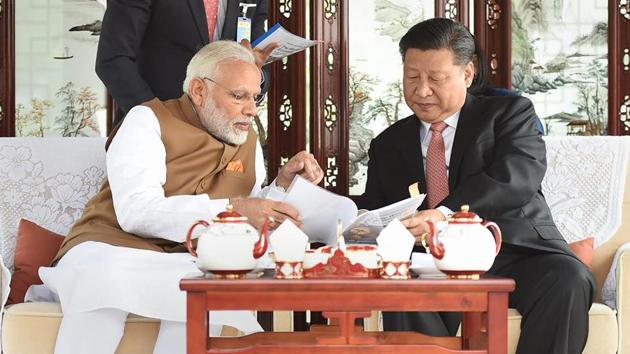Four years of Modi govt: PM’s personalised diplomacy boosts India’s influence
The most remarkable progress was made in ties with the UAE, Japan and Bangladesh -- where the Narendra Modi-led government built on efforts of the previous government --, and Iran.
Barring ties with two neighbours, the Maldives and Pakistan, four years of NDA government’s foreign policy has avoided needless ideological positioning; managed to successfully de-hyphenate ties with countries ideologically opposed to each other; and increased India’s heft and influence, at least some of which can be attributed to Prime Minister Narendra Modi’s personalised style of diplomacy. The past three months have seen significant strides in reinvigorating ties with China and Russia. Indeed, after the stand-off at Doklam last year, India and China haven’t put a foot wrong and relations between the two are probably the best they have been in decades. Simultaneously, the government has sought to build the Quad grouping, of India, the US, Japan, and Australia, as a sort of counter to China’s growing influence in the Indo-Pacific region, and also strengthened its ties with the ASEAN grouping, which fits in with its Act East policy.

The most remarkable progress was made in ties with the UAE, Japan and Bangladesh (where the Modi government built on efforts of the previous government), and Iran. The biggest example of de-hyphenating foreign policy came when Modi became the first Indian PM to visit both Israel and Palestine. Both were stand-alone trips. “Modi is willing to lead from the front and isn’t risk-averse. The policy at the end of the day is driven by the political will and the vision of the leader”, said an official who asked not to be identified. Agrees strategic affairs expert Brahma Chellany. “It is a fact that Modi has used his personal touch with some effect in diplomacy. He kept his personalised stamp on diplomacy, and relied heavily on bilateral summits to try and open new avenues for cooperation.”
India exists in a challenging neighbourhood. The threat of cross border terrorism from Pakistan continues. For better part of four years ties with Nepal remained chilly, although there are signs of a significant thaw now. But at the end of four years, the neighbourhood first policy remains a mixed bag. “PM Modi had invited all South Asian heads of states for his swearing-in ceremony in 2014. He believed in SAARC but then had to shift his focus towards Bay of Bengal Initiative for Multi-Sectoral Technical and Economic Cooperation (BIMSTEC) and Bangladesh, Bhutan, Nepal, India (BBIN) groupings. Line of Credits of worth more than $8 billion have been sanctioned by Indian government over the last 4 years towards various development projects, apart from close to 2000 training slots and various hydroelectric power buy back agreements with our neighbouring countries”, explained Prof Sachin Chaturvedi, director general of Delhi-based think tank, the Research and Information System for Developing Countries (RIS).
Getting membership to export control regimes such as Wassenaar Arrangement, Australia Group and Missile Technology Control Regime , stepping up ties with Africa, boosting cooperation in Indian Ocean, leading the solar alliance initiative , and further simplification of the passport process are other key achievements.






